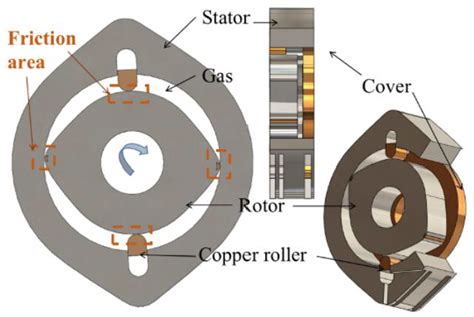Ceramic Bearings: A Comprehensive Guide to Enhanced Performance and Durability
Ceramic bearings have emerged as a game-changing technology in various industries, offering exceptional performance, durability, and efficiency advantages over traditional steel bearings. This comprehensive guide will delve into the intricacies of ceramic bearings, exploring their benefits, applications, and maintenance considerations.
Benefits of Ceramic Bearings
Reduced Friction and Wear: Ceramic bearings boast a significantly lower coefficient of friction compared to steel bearings. This reduced friction minimizes wear, leading to extended bearing life and improved efficiency.
Corrosion Resistance: Ceramic materials exhibit superior corrosion resistance, making them immune to rust and environmental degradation. This is particularly advantageous in harsh or corrosive environments.

High Temperature Tolerance: Ceramic bearings can withstand extreme temperatures, exceeding the capabilities of steel bearings. They retain their structural integrity and performance even under intense heat, making them suitable for high-temperature applications.
Electrical Insulation: Ceramic materials are electrical insulators, providing excellent protection against electrical discharge and interference. This makes them ideal for use in electrical devices and systems.
Non-Magnetic Properties: Ceramic bearings are non-magnetic, eliminating the risk of interference with magnetic fields. This is crucial in applications such as medical imaging and electronic devices.


Applications of Ceramic Bearings
Ceramic bearings have found widespread use in demanding industries, including:
- Aerospace and Defense
- Automotive Racing
- Semiconductor Manufacturing
- Medical Devices
- Renewable Energy
- Textile Machinery
How Ceramic Bearings Matter
Increased Performance and Efficiency
The reduced friction and wear of ceramic bearings translate into improved performance and efficiency. Equipment utilizing ceramic bearings experiences less energy loss and operates more smoothly, leading to enhanced productivity and cost savings.
Extended Lifespan
The exceptional durability of ceramic bearings contributes to significantly longer lifespans compared to steel bearings. This reduces maintenance costs and downtime, ensuring uninterrupted operation and maximizing return on investment.
Reliability in Extreme Conditions
Ceramic bearings' superior corrosion resistance and ability to withstand extreme temperatures make them ideal for applications where traditional bearings fail. Their reliable performance ensures consistent operation and extended equipment life.
Pros and Cons of Ceramic Bearings
Pros:
- Reduced friction and wear
- Corrosion resistance
- High temperature tolerance
- Electrical insulation
- Non-magnetic properties
Cons:
- Higher initial cost compared to steel bearings
- Potential for chipping or fracture if subjected to heavy impact or mishandling
Tips and Tricks for Ceramic Bearing Maintenance
-
Handle with Care: Ceramic bearings are delicate and should be handled with care to avoid chipping or damage.
-
Proper Lubrication: Ceramic bearings require specific lubricants designed for their material properties. Consult the manufacturer's recommendations for optimal lubrication intervals and procedures.
-
Cleanliness: Maintain a clean environment to prevent contaminants from entering the bearing. Regularly inspect and clean the bearings to remove any debris or dirt.
-
Avoid Impact Loads: Protect ceramic bearings from heavy impact or shock loads, as these can cause chipping or fracture.
-
Regular Monitoring: Regularly monitor ceramic bearings for any signs of wear or damage. Early detection and maintenance can prevent costly repairs or replacements.
How to Choose the Right Ceramic Bearing
-
Application: Determine the specific application and requirements, including load capacity, speed, temperature range, and environmental conditions.
-
Size and Configuration: Select the appropriate size and configuration of the ceramic bearing based on the application's specifications.
-
Material: Choose the ceramic material that best suits the operating environment and performance requirements.
-
Quality and Certification: Opt for ceramic bearings that meet industry standards and certifications to ensure quality and reliability.
Three Humorous Stories and Lessons Learned
Story 1:
A mechanic installed a ceramic bearing in a racing car, expecting a significant performance boost. However, the car mysteriously lost power. After hours of troubleshooting, they realized they had mistakenly lubricated the bearing with dish soap instead of the specified lubricant. The lesson learned: always follow the manufacturer's instructions!
Story 2:
A fisherman used a ceramic-tipped fishing rod hoping to catch the biggest fish in the lake. However, the line kept snapping at the ceramic tip. Frustrated, he discovered the ceramic tip was chipped due to mishandling. The lesson learned: ceramic bearings require proper handling to avoid damage.

Story 3:
An engineer designed a new hybrid vehicle that utilized ceramic bearings in the wheels to reduce friction. However, the bearings failed prematurely due to improper installation. The wheels had been overtightened, causing the ceramic bearings to crack under pressure. The lesson learned: proper installation and torquing are crucial for ceramic bearings.
Comparative Table: Ceramic Bearings vs. Traditional Steel Bearings
| Feature |
Ceramic Bearings |
Traditional Steel Bearings |
| Coefficient of Friction |
0.001-0.005 |
0.005-0.010 |
| Corrosion Resistance |
Excellent |
Poor |
| Temperature Tolerance |
Up to 1,500°C |
Up to 300°C |
| Electrical Insulation |
Yes |
No |
| Non-Magnetic Properties |
Yes |
No |
Table of Ceramic Bearing Materials and Their Applications
| Ceramic Material |
Advantages |
Applications |
| Silicon Nitride (Si3N4) |
High strength, corrosion resistance, low friction |
Aerospace, semiconductor manufacturing, medical devices |
| Zirconia (ZrO2) |
High hardness, wear resistance, high temperature tolerance |
Automotive racing, metalworking, aerospace |
| Alumina (Al2O3) |
Low cost, electrical insulation |
Electrical devices, pumps, textile machinery |
Table of Lubricants for Ceramic Bearings
| Lubricant Type |
Advantages |
Applications |
| Poly Alpha Olefin (PAO) |
High thermal stability, low volatility |
Aerospace, semiconductor manufacturing, medical devices |
| Perfluoropolyether (PFPE) |
Excellent chemical resistance, low friction |
Automotive racing, metalworking, high-vacuum applications |
| Ester-Based Oils |
Good lubricity, low corrosion |
Electrical devices, pumps, food processing equipment |
Conclusion
Ceramic bearings represent a technological advancement that delivers exceptional performance, durability, and efficiency benefits. Their unique material properties and design make them an ideal choice for a wide range of demanding applications across industries. By understanding the advantages, applications, and maintenance considerations of ceramic bearings, businesses and individuals can harness their transformative capabilities to optimize performance and drive innovation.

